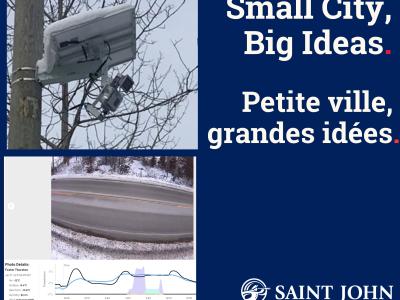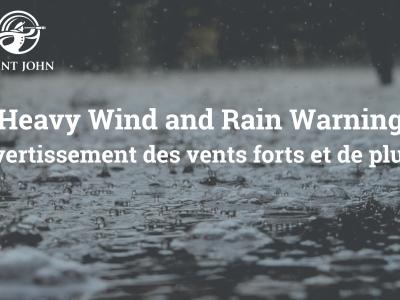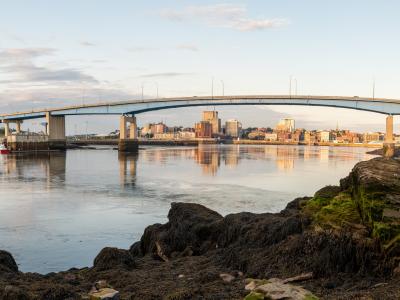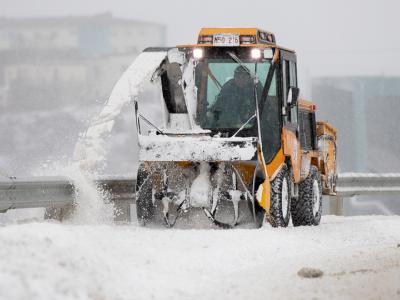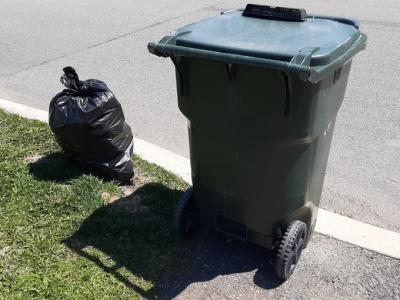Climate change poses a significant threat to our quality of life. In recent years, the impacts of climate change have become more and more apparent. As a coastal city, Saint John has been impacted by unpredictable weather, historic flooding, and rising sea levels.
Over the years, the City of Saint John has taken action to address our demands on energy infrastructure, reduce greenhouse gas emissions, and support sustainability efforts through active transportation, waste reduction, transit, green infrastructure and care of our green spaces.
Working within City operations and the community, the City has become a recognized leader across the country for environmental leadership and community collaboration.
Municipal Energy Efficiency Program (M.E.E.P.)
The City of Saint John has been an early adopter of implementing energy efficiency measures in relation to municipal and water facilities. The City was one of the first, and one of the few, Canadian municipalities in Atlantic Canada to embark on creating a Municipal Energy Efficiency Program (MEEP).
The following are a list of environmental and economic benefits as of 2017:
- Reduced energy cost by over $2.3 Million
- Reduced Greenhouse Gas Emissions by over 9400 tons of CO2 or 24%
- Reduce Energy consumption by approximately 8.6 Million KWH and
35,000 GJ of Natural Gas and oil/propane or 30 % - Received over $22 Million in Grants & Loans
- Implemented over 100 environmental initiatives
M.E.E.P. has been recognized regionally and nationally as best practice.
2013 |
Community Recognition Award - Province of New Brunswick |
2012 |
Top 7 Intelligent Communities Award - Intelligent Communities Forum (ICF) |
2011 |
Premier’s Award for Energy Efficiency – Commercial New Construction (Saint John Transit) |
2011 |
Premier’s Aware for Energy Efficiency, Energy Efficiency Champion – Commercial Sector |
2010 |
Milton F. Gregg Conservation Award, Conservation Council of New Brunswick, Saint John Sustainable Energy Management Team |
2008 |
CH2M HILL Sustainable Community Award - Federation of Canadian Municipalities |
The arena season operates this year from October 11, 2024 to March 31, 2025, the City of Saint John offers free public skating at all three of our indoor rinks. For dates and times, please download the public skating schedule, which is located on the right side of this page under related documents.
If you’re looking for somewhere to skate in Saint John, whether for hockey or recreational skating, you’re in luck. Not only does your city have the facilities you need (three municipal arenas and one outdoor rink), but all public skating in Saint John is completely free! In addition to public skating, our arenas also offer free scheduled ice time for preschoolers and seniors.
Indoor skating arenas include:
Charles Gorman Arena, 80 University Ave.
Stewart Hurley Arena, 1500 Hickey Rd.
Peter Murray Arena, 711 Dever Rd.
Outdoor skating surfaces include:
Outdoor skating surface located at Ihtoli-maqahamok - The Gathering Space, 1 Market Square as weather and conditions permit, from 9 a.m. to 9 p.m. daily.
Outdoor skating is available at Lily Lake in Rockwood Park as weather and conditions permit, from dawn until 10 p.m.
Outdoor ice conditions are available by calling Customer Service at 506-658-4455.
Postponed Canada Day fireworks rescheduled for Saturday, July 16
Rockwood Glows
Rural properties in Saint John are especially prone to flooding. In the autumn months, Saint John’s location along the Saint John River and Bay of Fundy makes it vulnerable to ice storms, spring freshet flooding, and hurricanes. In the winter, frozen culverts can create problems with the natural flow of water. And in the spring, melting snow can be a major contributor to flooding. Localized flooding is the situation that is most common in Saint John but these are usually short term.
What we do
Ditches and culverts in Saint John’s rural areas divert runoff and prevent roads and buildings from flooding. There are 21,027 metres of municipal ditches in Saint John’s rural areas. The City operates and maintains more than 2,640 culverts (2,100 driveway culverts and 500 cross culverts) and 1,054 culvert headwalls, most of them in the rural areas. Additionally, Saint John’s rural communities benefit from 9 stormwater facilities like wet ponds, dry ponds, oil and grit separators, and inlet control structures.
In some rural communities, stormwater ponds collect the runoff and hold it back long enough to allow pollutants to settle and be broken down by bacteria. Cleaner water is then released into nearby waterways.
The City of Saint John monitors water levels and weather conditions due to spring flooding from the Saint John River and runoff. We check roads and direct employees on when and where steaming, road repairs, or barricades and warning signs are required (but note that the city does NOT go onto private property to clean out or steam the culverts). Media releases keep local residents informed of road closures and dangerous areas, and in extreme conditions, daily updates on the city website also keep residents up to date.
Summer grading of gravel roads
The goal of summer gravel road maintenance is to keep gravel roads in a reasonable safe driving condition relative to recent weather conditions. The order in which roads are graded depends on traffic volumes, the structural conditions of the road, and the amount of gravel on the road. Repair of soft spots in gravel roads will be undertaken if funding is in place and when crews and materials are available.
Roadway structures
City staff work to maintain roadway structures—including retaining walls, guide rails, municipal fences, medians, and roadway shoulders—that extend the road life and ensures the safety of the public. These efforts provide drivers and pedestrians with safe, functional roads, and maintain accessibility of these roads through all seasons.
You can help
Here’s what you can do to help reduce the risk of flooding on your property.
Effective downspout drainage
Downspouts should be disconnected from the weeping tile and extend at least 1.8 metres (six feet) from your basement wall to drain away from the house toward a street or drainage swale. This ensures roof water doesn’t enter onto the weeping tile around your foundation.
Proper lot grading
Land should slope outward from the foundation of the house for a minimum of 1.8 metres (six feet). If the lot slopes toward the house, surface water will enter the weeping tile and overload the drainage system. Use impervious materials such as clay or a plastic drainage mat near the surface to limit the amount of surface water that finds its way to the weeping tile.
Rain Gardens
Install a rain garden to limit flows to the storm sewer or neighbouring properties. Rain gardens are planted depressions that are designed to absorb rainwater runoff from impervious areas like roofs, driveways, walkways, and compacted lawn areas. This reduces rain runoff by allowing stormwater to soak into the ground.
Swales
A swale is a wide shallow channel with gently sloping side slopes. Provide swales along the back and/or side property boundaries to limit flows towards your house. The swales should be as large as possible to slow runoff.
We all know that climate change poses a significant threat to the planet. As a coastal city, Saint John is particularly vulnerable, as evidenced by unpredictable weather, historic flooding, and rising sea levels. It is the responsibility of everyone—residents, officials, and government—to make every effort to live more sustainably, to minimize our environmental footprint, and use resources responsibly.
Over the years, the City of Saint John has taken action to address our demands on energy infrastructure, reduce greenhouse gas emissions, and support sustainability efforts. Through active transportation, waste reduction, transit expansion, green infrastructure, and care of our green spaces, we are improving quality of life, and lowering our impact on the environment that sustains us all.



